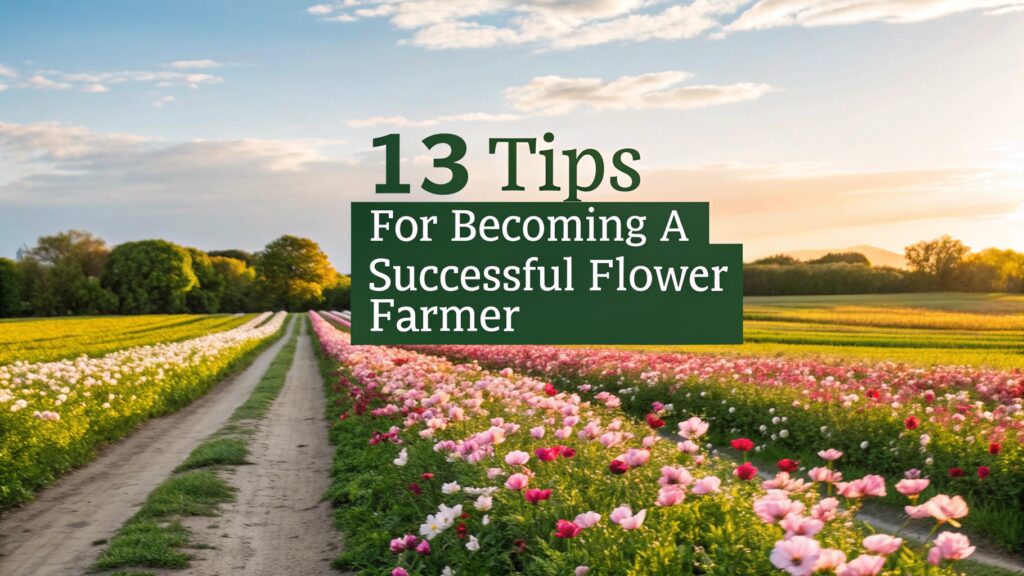Do you want to be a successful flower farmer? Having a good plan is very important. You need to know what to do to make your flower farm great.
Want to learn the secrets of growing beautiful flowers and selling them too? We have 13 special tips to help you become a great flower farmer. Read on to find out what they are and start your journey to success!
Developing a Solid Business Plan
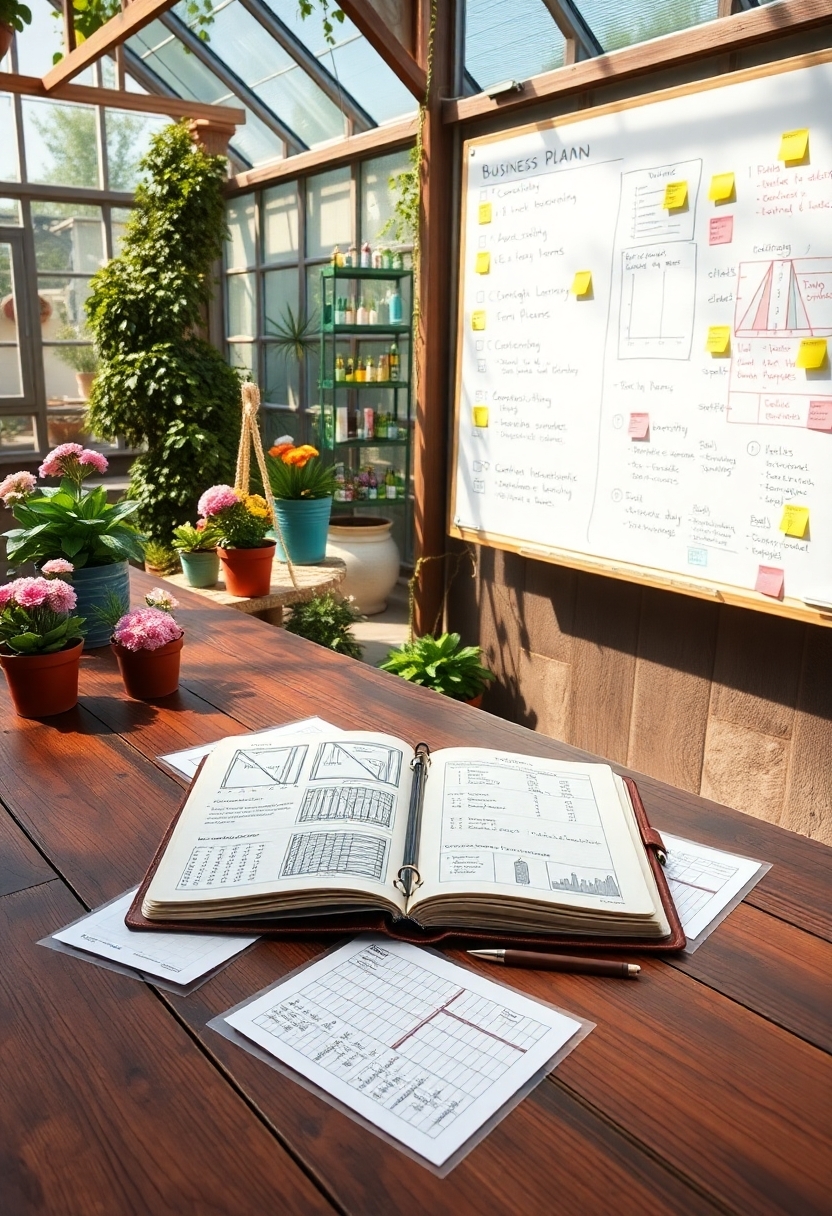
Developing a solid business plan is vital for a flower farm’s success. It outlines goals, target markets, financial projections, and operational strategies, helping farmers make informed decisions and stay competitive. A well-crafted plan guarantees efficient use of resources, manages risks, and guides the farm towards long-term sustainability and profitability.
Choosing the Right Flowers to Grow

Choosing the right flowers to grow is vital for a successful flower farm. Consider factors like climate, soil type, and market demand when selecting varieties. Popular choices include roses, sunflowers, and wildflowers, which can be sold to florists, wholesalers, or directly to consumers through farmers’ markets or online platforms. Research and planning are key to making informed decisions.
Preparing the Perfect Soil
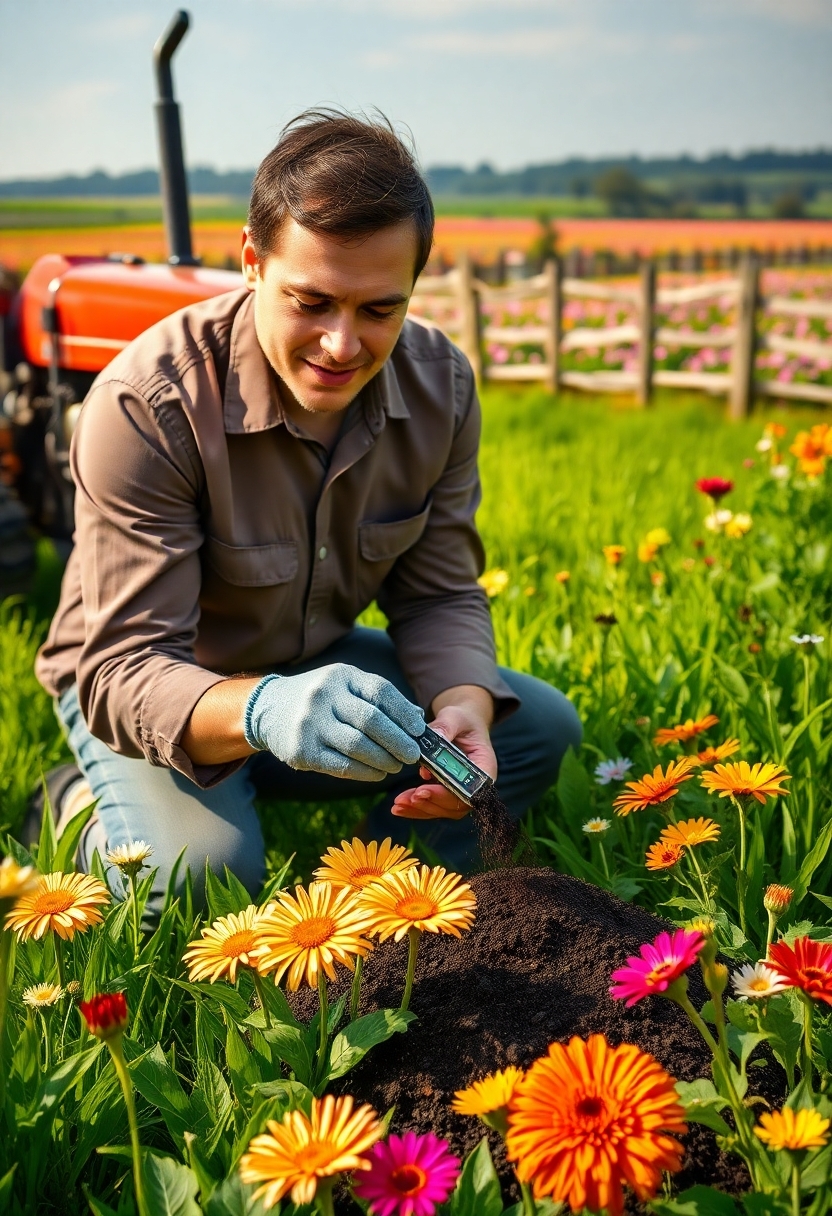
Preparing the perfect soil is vital for a successful flower farm. It involves testing the pH level, adjusting nutrient content, and adding organic matter to create a balanced and fertile environment for flowers to thrive. Proper soil preparation guarantees healthy root growth, vibrant blooms, and increased crop yields, setting the foundation for a thriving flower farm.
Building a Strong Brand Identity

Building a strong brand identity is essential for flower farmers to differentiate themselves and attract customers. This involves creating a unique logo, website, and social media presence that showcases their products and values. Consistent branding helps establish trust and recognition, setting the foundation for a loyal customer base and long-term success.
Effective Time Management Strategies

Effective time management is essential for flower farmers to balance planting, harvesting, and marketing. Prioritizing tasks, setting realistic goals, and utilizing calendars or apps can help optimize daily schedules, ensuring timely completion of critical tasks and maximizing productivity throughout the growing season.
Marketing Your Flowers to Local Customers
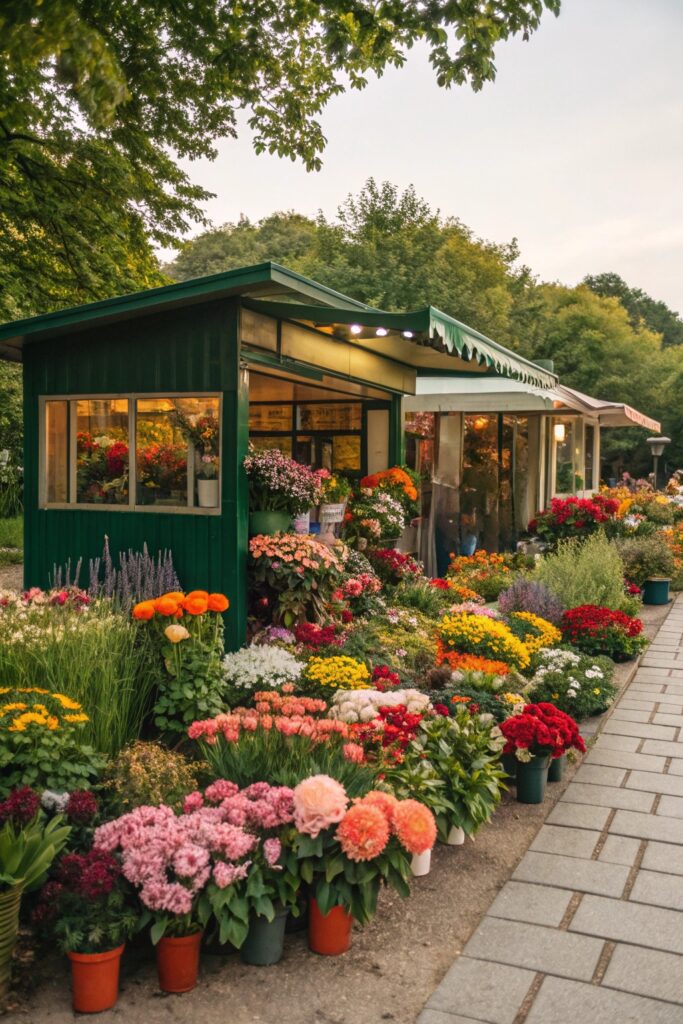
Effective marketing is vital to selling your flowers to local customers. Develop a strong online presence, utilize social media, and participate in local farmers’ markets to showcase your products. Building relationships with potential buyers, such as florists, event planners, and restaurants, can also lead to consistent and loyal customers.
Understanding Your Target Market

Understanding your target market is vital for a successful flower farm. Identify the demographics, preferences, and buying habits of potential customers, including florists, event planners, and individual buyers. Analyze local demand, competition, and market trends to determine the types of flowers to grow and pricing strategies.
Read More:
- 15 Stunning Raised Bed Garden Layouts That Will Transform Your Backyard!
- 10 Vertical Vegetable Garden Hacks That Will Transform Your Small Space!
- 12 Stunning Small Flower Garden Arrangements Around Trees Ideas
- 12 Clever Backyard Vegetable Gardens for Small Spaces
Creating a Profitable Pricing Strategy

Creating a profitable pricing strategy involves understanding production costs, market demand, and competition. Flower farmers must balance pricing to guarantee profitability while remaining competitive and attractive to customers. This may involve offering tiered pricing, discounts for bulk orders, or value-added services to increase revenue and customer loyalty. Accurate cost tracking is essential to set prices that support a sustainable business.
Managing Finances and Budgeting

Effective financial management is vital for flower farmers. This involves creating a budget, tracking expenses, and forecasting revenue to guarantee profitability. Accurate record-keeping and regular financial reviews help farmers make informed decisions and adjust to market fluctuations, ultimately leading to a successful and sustainable flower farming business.
Building Relationships With Suppliers

Building relationships with suppliers is vital for a flower farmer. Establishing trust and open communication can lead to better prices, reliable delivery, and access to high-quality materials and equipment. Strong supplier relationships can also provide valuable advice and support, helping farmers navigate challenges and stay up-to-date with industry trends and best practices. This fosters long-term success.
Implementing Sustainable Farming Practices
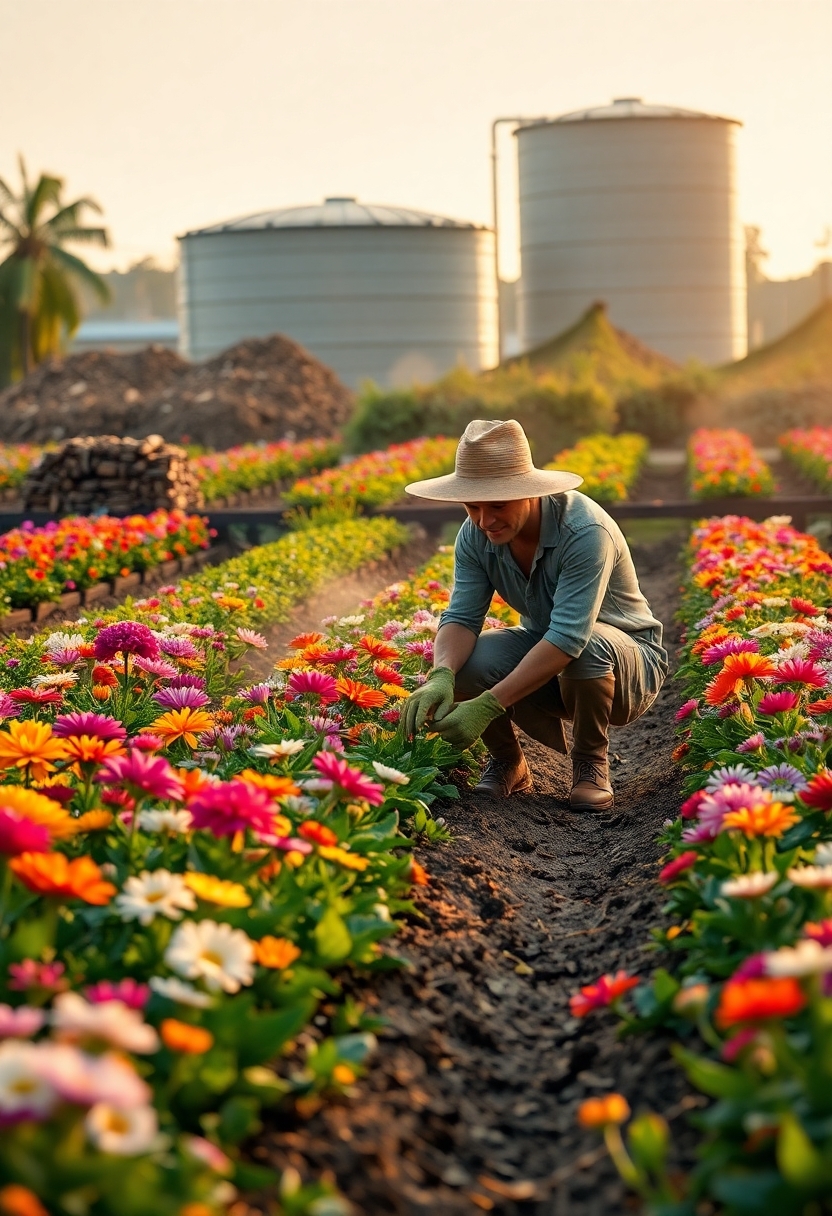
Implementing sustainable farming practices is vital for a successful flower farm. This involves using natural methods to control pests and diseases, conserving water, and reducing waste. Sustainable practices also include crop rotation, composting, and using eco-friendly packaging materials to minimize environmental impact and promote a healthier ecosystem for the flowers to thrive.
Staying Organized With Record Keeping

Effective record keeping is vital for flower farmers to track finances, inventory, and crop yields. Accurate records help identify areas for improvement, inform planting decisions, and guarantee compliance with regulations. By maintaining detailed and organized records, flower farmers can make data-driven decisions to optimize their operations and increase profitability. Digital tools and spreadsheets can facilitate this process.
Adapting to Changing Seasonal Demands

Adapting to changing seasonal demands is vital for flower farmers. This involves understanding peak bloom times, adjusting crop selection, and planning for fluctuations in customer demand. By staying attuned to seasonal shifts, farmers can maximize profits and guarantee a consistent supply of fresh, in-demand flowers throughout the year. Strategic planning helps navigate these changes.
Conclusion
You’re the master gardener, nurturing a successful flower farm. Like a blooming flower, your business will flourish with careful planning, pruning ineffective strategies, and nourishing growth. With these 13 tips, you’ll cultivate a thriving operation, adapting to seasonal changes and harvesting consistent profits, ultimately yielding a fruitful and sustainable flower farm.

